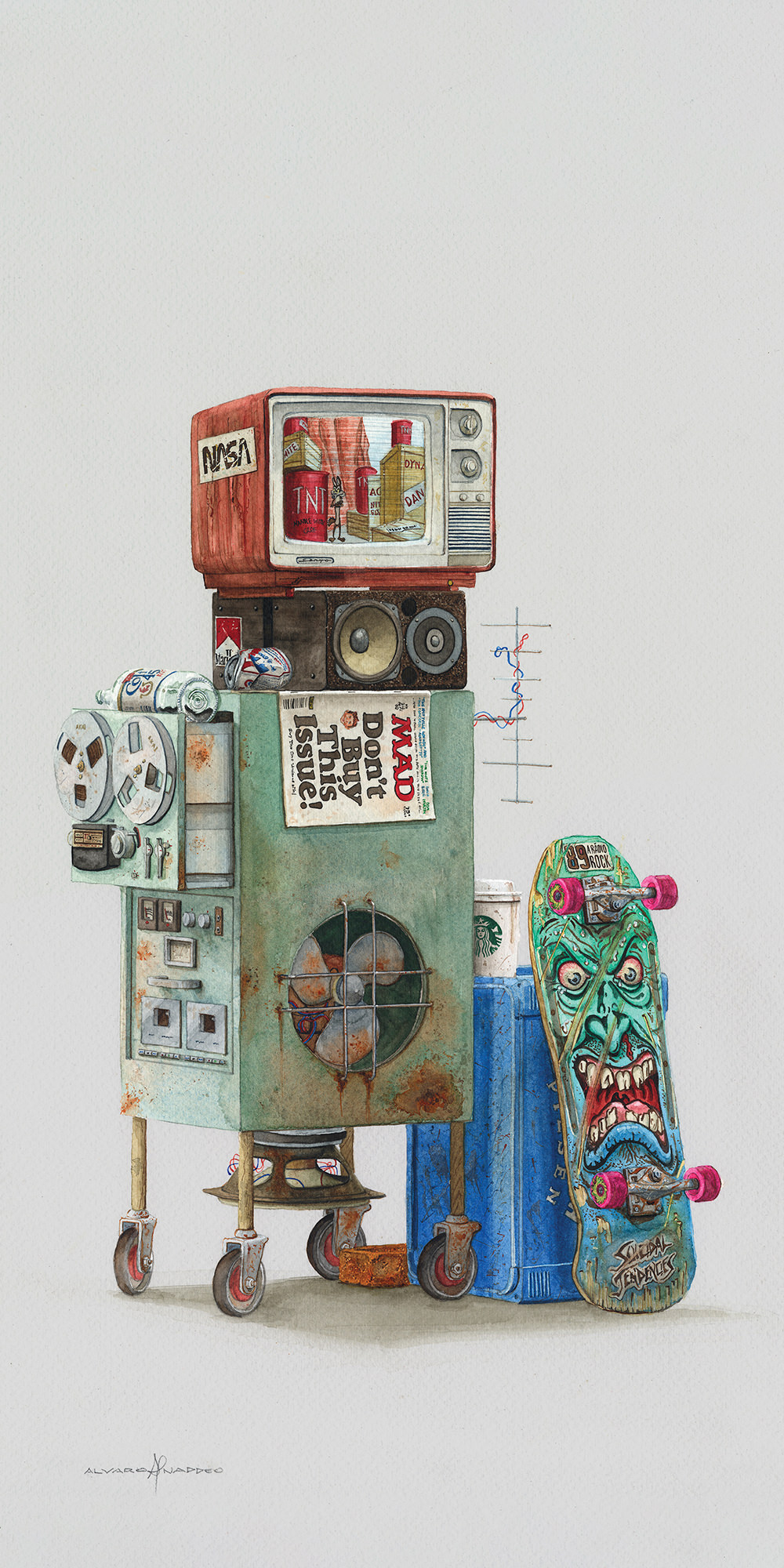I like to bounce around the room quite a bit when mixing records. I obviously sit centered when I launch into the proceedings, but once the mix is in a good place, I tend to move around my studio. How does the energy of the track feel throughout the room? Does it translate close to my desk as it does to the loveseat in the back of my room? Whenever I leave the center station, I switch over to my midfields, which are Bowers & Wilkins DM602s driven by a Bryston 8B power amp. This simple (and affordable) chain sounds ferocious, letting me understand what my mix sounds like on a living-room hi-fi. But my B&Ws always sat on random speaker stands I inherited from who knows where. It did the trick for several years, but they were in a fixed position and the tweeters sat well below my ear level when standing. So, when I heard about Space Lab System’s LIFT, I knew I had to give this a try.
LIFT is a “motorized speaker stand with high-performance vibration damping,” created by Brooklyn-based studio designers, Tim Crossley and Matt Schaefer, in collaboration with the owner of Manhattan’s Precision Sound, Alex Sterling. The story goes that Alex approached Tim and Matt to help him design a speaker stand that simply goes up and down, but with high-quality isolation and vibration control. LIFT’s isolation properties are a result of years of R&D for Precision Sound’s flush-mounted speaker decoupling system. The platforms are made with neoprene friction pads and Sylomer isolators, “a space-aged material” that helps “separate” the speaker from the stand and floor. Space Lab claims that LIFT’s platform can have a “natural frequency as low as 8.8 Hz!” The three of them quickly realized that a product with real decoupling technology and height motorization simply didn’t exist on the market, hence LIFT was born!
Full disclosure, I’ve known Tim and Matt for some years. Their studio design firm, Crossley Acoustics, has designed several studios for me, including my home studio. So, when I saw them post about LIFT, it not only got me excited because it served a missing need for my studio, but I knew from past experience that if they put the same amount of care and love as they do into studio design into a physical product, then this would be something well worth checking out.
When my LIFT arrived, it was understandably on the heavy side, nevertheless easy to assemble. A simple up-down remote control connects to a single power supply. I quickly placed my B&Ws, positioned them to my liking, and LIFT-OFF! My midfield system never sounded better. Not only was it fun to play mixes and reference tracks while moving the speakers to great heights (when standing and dancing around the studio) and low-level position (for reclining on my loveseat) with incredible stability, but stereo image, depth-of-field, and transients never sounded better in my room. I went right into a live concert recording I needed to deliver by end-of-day, and I mixed it in no time, mostly monitoring on my midfields and getting the artist’s approval immediately. Not only do I have a fun (and sleek) new addition to my studio, but it drastically improved my workflow. It should also be noted that LIFT works for any free-standing speaker, nearfield or midfield, with a larger model that is suited for substantial midfields. At a starting price point of $749 per stand for the smaller model, the LIFT is a no-brainer for any commercial or home facility. We should all look forward to what the future holds for Space Lab. Pricing based on size and isolation level.




_disp_horizontal_bw.jpg)